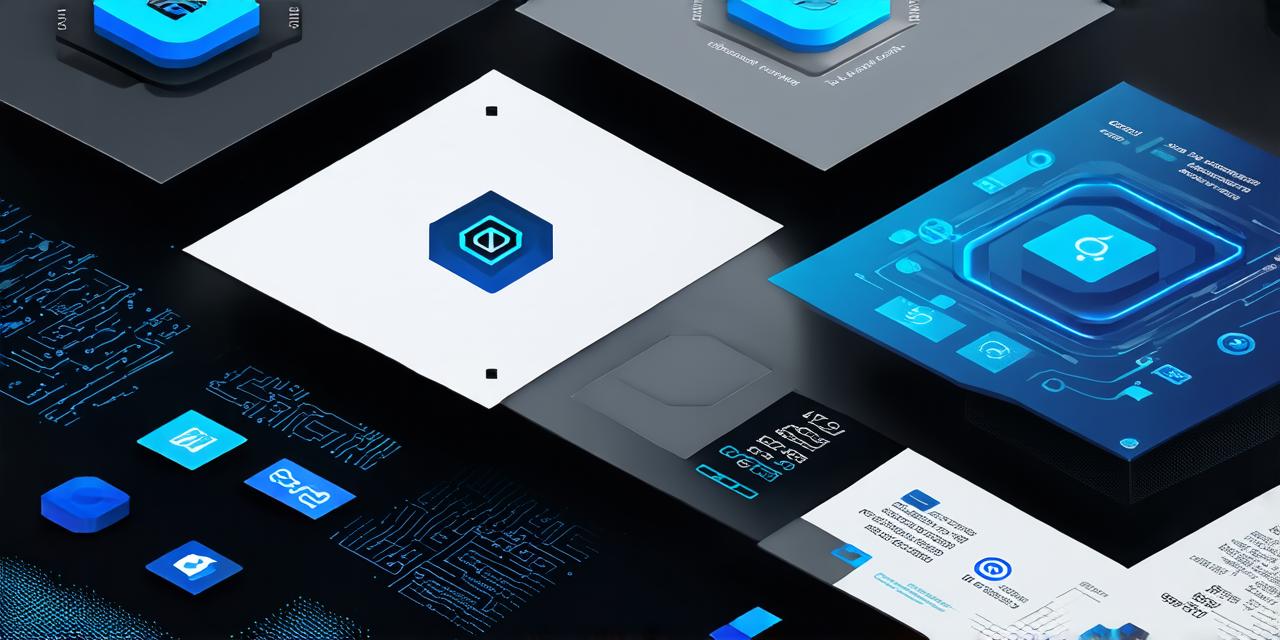Introduction

Blockchain technology is essentially a decentralized ledger that records transactions across multiple computers in a secure and transparent way. It was first introduced by Satoshi Nakamoto in 2008 as a way to enable secure and peer-to-peer transactions without the need for intermediaries such as banks or credit card companies. Since then, blockchain technology has evolved and diversified to meet a wide range of needs.
In this article, we will discuss the key features and principles of blockchain technology, as well as explore some real-world examples of how it is being used in various industries. We will also provide you with some tips and best practices for developing blockchain applications, including security considerations, scalability issues, and regulatory compliance.
Key Features and Principles of Blockchain Technology
-
Decentralization: One of the key features of blockchain technology is its decentralized nature. Unlike traditional databases that are stored in a single location, blockchains are distributed across multiple computers, making them more resilient to hacking and data loss. In addition, because there is no central authority controlling the network, transactions can be processed quickly and efficiently without the need for intermediaries.
-
Immutability: Another important feature of blockchain technology is its immutability. Once a transaction is recorded on a blockchain, it cannot be altered or deleted. This ensures that the data on a blockchain is secure and tamper-proof, making it an ideal solution for applications such as identity verification and supply chain management.
-
Transparency: Blockchain technology provides complete transparency to all participants in the network. Every transaction that takes place on a blockchain is publicly visible and can be verified by anyone with access to the network. This makes it easy to trace the flow of funds and ensure compliance with regulations.
-
Consensus mechanisms: Blockchain networks use consensus mechanisms to validate transactions and add them to the ledger. The most commonly used consensus mechanism is proof-of-work, which requires miners to solve complex mathematical problems in order to validate transactions. Other consensus mechanisms include proof-of-stake, delegated proof-of-stake, and hybrid models that combine different mechanisms.
Real-World Examples of Blockchain Technology in Action
-
Cryptocurrencies: The most well-known example of blockchain technology is cryptocurrencies such as Bitcoin and Ethereum. These digital currencies use a decentralized ledger to enable secure and peer-to-peer transactions without the need for intermediaries.
-
Supply chain management: Blockchain technology is being used in supply chain management to provide greater transparency and traceability of products from manufacturer to end consumer. By using a blockchain-based system, companies can track the movement of goods across multiple stages of the supply chain, ensuring that they are produced ethically and sustainably.
-
Identity verification: Blockchain technology is being used for identity verification in industries such as finance, healthcare, and e-commerce. By using a decentralized ledger, users can securely and privately store their personal information, which can be accessed and verified by anyone with access to the network.
-
Voting systems: Blockchain technology is being explored as a solution for voting systems, providing greater transparency and security in the election process. By using a decentralized ledger, votes can be recorded and counted securely, without the need for intermediaries or centralized authorities.
Tips and Best Practices for Developing Blockchain Applications
-
Security: One of the most important considerations when developing blockchain applications is security. Because blockchains are decentralized and immutable, they are inherently secure. However, developers must still take steps to protect against hacking and other forms of cybercrime. This includes using strong encryption protocols, implementing multi-factor authentication, and regularly updating software to patch any known vulnerabilities.
-
Scalability: Blockchain technology can be slow and resource-intensive, especially when dealing with large volumes of transactions. Developers must take scalability into consideration when designing their applications, including using sharding techniques to distribute data across multiple nodes, and implementing off-chain solutions for certain tasks.
-
Regulatory compliance: Depending on the industry in which a blockchain application is being developed, there may be regulatory requirements that must be met. Developers must stay up-to-date with relevant regulations and ensure that their applications comply with all applicable laws and guidelines.
-
User experience: Finally, developers must prioritize user experience when developing blockchain applications. Because the technology can be complex and difficult to understand, developers must make it easy for users to interact with their applications in a clear and intuitive way. This includes providing clear instructions and tutorials, as well as designing interfaces that are easy to navigate.
Conclusion
Blockchain technology is one of the most exciting and transformative technologies of our time. It has the potential to revolutionize industries ranging from finance to healthcare, from supply chain management to identity verification. While there is still much to learn about blockchain technology, by understanding its key features and principles, developers can begin to explore its many possibilities and develop innovative solutions that meet the needs of their users. As with any new technology, there will be challenges and obstacles to overcome, but with perseverance and ingenuity, blockchain technology has the potential to change the world.
